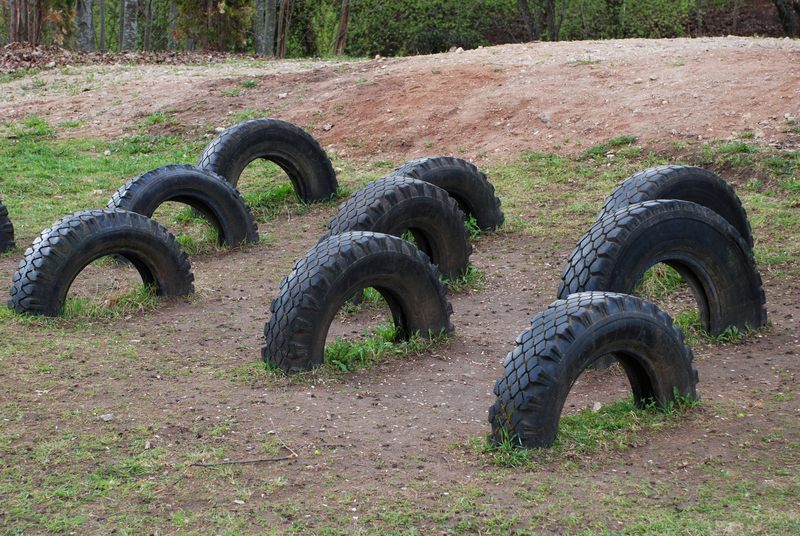How to Sort, Store, and Safely Dispose of Used PPE
In recent years, the proper management of Personal Protective Equipment (PPE) has become more important than ever. Whether you are a healthcare professional, a frontline worker, or simply using masks and gloves in daily life, understanding how to sort, store, and safely dispose of used PPE is crucial for safeguarding your health and protecting the environment.
This comprehensive guide will walk you through the proper way to handle used personal protective equipment, reduce contamination risks, and support your organization or household in adopting best practices.
Why Is Correct PPE Handling Important?
Used PPE such as masks, gloves, gowns, and face shields can harbor infectious agents or toxic substances. Improper disposal not only increases the risk of spreading disease but also has negative impacts on the environment. With billions of PPE items entering the waste stream, the way we sort, store, and dispose of PPE matters.
Key Risks of Incorrect PPE Disposal
- Spread of infectious diseases from contaminated materials.
- Harm to waste handlers and cleaning staff who come in contact with improperly discarded PPE.
- Environmental pollution, especially from plastics in masks and gloves entering waterways and wildlife habitats.
- Clogging of municipal waste systems and increased landfill burden.

How to Sort Used PPE Correctly
The first step to effective PPE management is proper sorting. Sorting used personal protective equipment ensures that contaminated, recyclable, and non-recyclable materials are handled appropriately.
Types of PPE Waste
- Contaminated PPE: Items that have been in contact with infectious agents or dangerous substances. For example, medical masks from hospitals.
- Non-contaminated PPE: Items worn in low-risk settings that are not visibly soiled (e.g., masks used for brief shopping trips).
- Reusable PPE: Items such as washable cloth masks and reusable goggles that must be cleaned and stored, not thrown away.
Sorting Tips for Used PPE
- Separate by Type. Always sort masks, gloves, gowns, and eye protection into different containers. This helps in further processing and disposal.
- Distinguish Contaminated from Non-Contaminated PPE. PPE used in medical or laboratory settings should be classified as contaminated, while household items may often be treated as household waste (check local guidelines).
- Check Local Recycling Regulations. Some types of PPE, like N95 masks or nitrile gloves, may be recyclable in certain regions. Consult your local council for guidance on PPE recycling options.
- Keep Reusables Separate. Reusable PPE should never be mixed with disposable items. Store them in a clean, marked area for washing or sanitizing.
Storing Used PPE Safely Before Disposal
Proper storage prevents accidental contamination and exposure to pathogens. Storing used PPE safely requires following protocols that protect both you and those who may handle the waste after you.
Best Practices for PPE Storage
- Seal in Appropriate Bags. Place used PPE in leak-proof, puncture-resistant bags. For medical or high-risk contamination, use designated biohazard bags (usually red or yellow).
- Label Containers Clearly. Mark bags or bins as "Used PPE" or "Biohazard" for easy identification.
- Use Touch-Free Bins Where Possible. Hands-free foot pedal bins help reduce contact with the waste container.
- Avoid Overfilling. Do not pack bins or bags beyond capacity. Overfilled containers increase spill risk and make safe disposal harder.
- Store Away from Living Areas. Keep used PPE in a designated, ventilated storage area away from food, household items, and high-traffic zones until disposal.
Handling and Storing Reusable PPE
- Launder Cloth Masks and Gowns Promptly. Place them in a separate bag or container until washing.
- Disinfect Eye Protection and Face Shields. Use alcohol-based wipes or follow manufacturer instructions.
- Provide Clean Storage Containers Post-Cleaning. Store freshly washed PPE in a dry, clean, and closed box or bag.
How to Dispose of used PPE Safely and Responsibly
When it's time to get rid of your used personal protective equipment, safely disposing of PPE is vital to prevent contamination, occupational hazards, and environmental issues.
Step-by-Step Guide to PPE Disposal
- Wash Your Hands First. Always wash or sanitize your hands before and after handling PPE waste, even when using gloves.
- Double-Bag High-Risk PPE. For contaminated or medical PPE, use a double-bagging technique: place the first sealed bag inside a second for extra protection.
- Follow Local Waste Disposal Regulations. Some areas require PPE to be treated as clinical or hazardous waste. Check with your local municipality or waste authority for specific disposal instructions.
- Do Not Recycle Single-Use PPE Unless Specified. Items like disposable masks, gloves, and face shields generally cannot be recycled in regular facilities. Using dedicated PPE recycling programs, if available, is ideal.
- Use Designated Collection Points or Drop-Offs. Hospitals, pharmacies, or civic centers may offer PPE drop-off bins for hazardous waste.
- Seal and Label each bag before placing it in external bins or at collection points. Clearly mark the contents as PPE waste.
- Keep PPE Separate from General or Recyclable Household Waste. This reduces cross-contamination and protects waste handlers.
Special Considerations for Businesses and Workplaces
Businesses and healthcare facilities generating large volumes of PPE waste should:
- Appoint a designated PPE waste coordinator.
- Provide adequate training on PPE disposal protocols.
- Maintain a supply of biohazard bags and maintain documentation for compliance.
- Schedule regular waste pick-ups with certified hazardous waste handlers.
Environmental Impact of Improper PPE Disposal
Improperly disposed of PPE poses significant challenges to our ecosystem:
- Plastic pollution: Disposable masks and gloves are made from synthetic polymers, contributing to marine litter and harming wildlife.
- Human health risks: Children or animals can come in contact with discarded PPE on streets or parks.
- Microplastic contamination: PPE items break down into microplastics that contaminate soil and water.
Therefore, understanding how to correctly store and safely dispose of PPE waste is essential not only for immediate public health but also for long-term sustainability.
Eco-Friendly Alternatives & Innovations in PPE Disposal
An increasing number of organizations are addressing the environmental impact of PPE with innovative solutions, including:
- PPE Recycling Programs: Specialized eco-recycling firms now accept disposable masks, gloves, and face shields to be processed safely.
- Biodegradable PPE: Some manufacturers produce compostable masks and gloves that minimize landfill burden.
- Energy-Recovery Waste Plants: Modern facilities convert PPE waste into usable energy, reducing environmental impact.
Whenever possible, support these initiatives and look out for PPE collection programs in your community.

FAQ on Sorting, Storing, and Disposing of Used Personal Protective Equipment
Can household PPE be thrown in the regular trash?
Most municipal guidelines allow household PPE, like disposable masks and gloves, to be placed in regular household waste if they are not heavily contaminated. However, always double-bag and avoid placing in recycling bins. Check your local waste management policies.
What if I can't find a PPE recycling program near me?
Double-bag and securely dispose of PPE in household or clinical waste streams. Do not attempt to recycle used PPE with other recyclables unless you are sure your facility accepts it.
How often should storage bins for used PPE be emptied?
PPE waste bins should be emptied daily or whenever they reach two-thirds capacity to prevent overflow and exposure.
Conclusion: Best Practices for Sorting, Storing, and Safely Disposing of PPE
By adopting the following best practices in PPE waste management, you can protect yourself, your community, and the environment:
- Sort used PPE by type and contamination level. Keep contaminated items separate from non-contaminated and reusable PPE.
- Store PPE in labeled, sealed, and puncture-resistant containers away from living or food preparation areas.
- Dispose PPE according to local regulations, using double-bagging for high-risk items and avoiding cross-contamination with other waste streams.
As the world adapts to post-pandemic life, responsible PPE disposal will remain a public health priority. Stay informed, follow guidelines, and educate others about the importance of sorting, storing, and safely disposing of used personal protective equipment.
For additional local guidance, contact your regional health department or waste management authority and always stay updated on the latest regulations.
